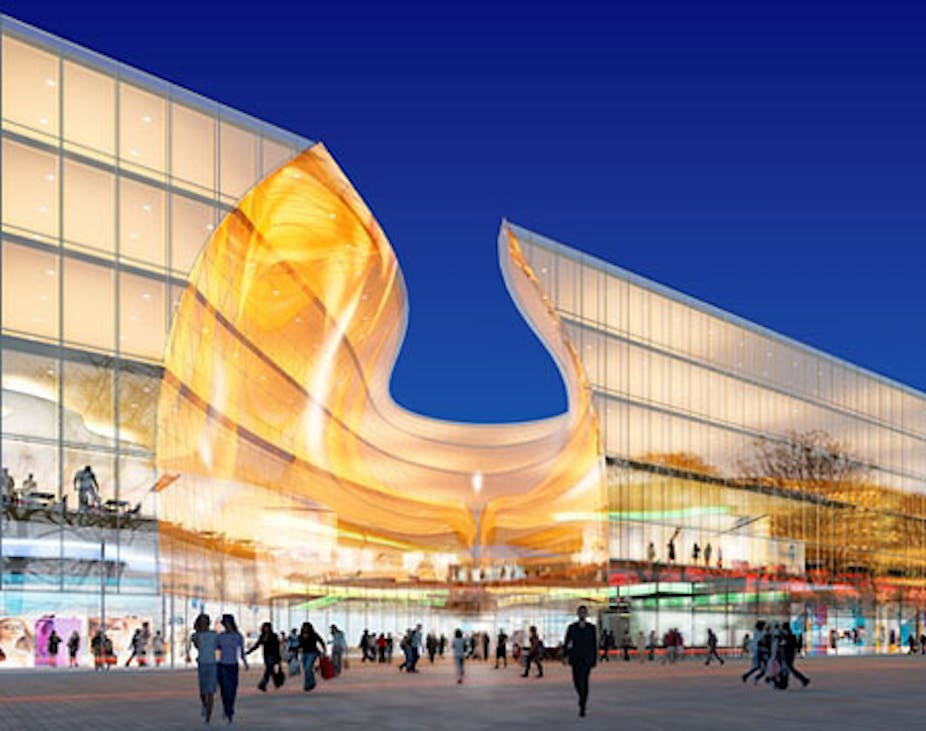AUSTRALIA 2050 – Making predictions about the future is always good fun.
Despite the pretensions of many social futurists who wax lyrical with certainty about what will happen, and how we will work, live and play, the fact remains that we are often bound by our current paradigms when considering more distant futures.
This is certainly true when considering the future of retail. It is easy to generalise, but we cannot anticipate the unique mix of fundamental paradigm shifts – competitive, social and technological – that will change the fabric of the industry.
We can extrapolate current retail trends and simply say that we can expect more “more” – more technology, more personalisation, more choice, more channels, more convenience, more innovation.
Then we can invent cool, marketable terms for these trends and shifts, and hey presto – we'e all retail futurists!
But all we are really doing is multiplying the present, as viewed through our current paradigm.
The year 2020 provides a neat tagline focus for researchers and commentators to play this game, but 2050?
How accurate would our specific predictions about the future of retail in all its complexity have been in 1972?
So, as long as we’re clear that seriously predicting the detailed long term future of a rapidly evolving industry like retail is a purely speculative pursuit, here’s my top 5 for 2050:
1. The global consumer will prevail
Consumers will continue to shop internationally via diverse channels (although the internet will be unrecognisable in 2050) across fluctuating currency markets. Governments will not act to protect domestic retailer interests against this trend.
For branded commodity retailers, especially in categories like electronics, fashion and cosmetics, this will mean significant market rationalisation with growth in the number of pure online players.
Ambitious retailers – both bricks-and-mortar and online – in core sectors will have to increasingly play distributor and retailer, buying products to order and co-ordinating local distribution from source.
2. Digital inventory will replace physical stock
Having a large product inventory is costly, there are no guarantees it will all sell at full price and it has significant margin implications in other ways, including the risk of theft.
We can expect to see much more 2D, 3D, or even 4D, “virtual merchandising” in stores, supported by rapid, low cost distribution service providers enabling consumers to explore product features in store and opt for later delivery or pick up of their purchases.
This option already exists in some sectors, but we’ll see a lot more of it, especially in low-margin retail categories.
This will likely bring an end of the business model of buying merchandise in the hope it will sell.
There will be scope within these technologies to transform customers into category managers. If products aren’t viewed, they will cease to be listed. If they aren’t bought by the consumer, they aren’t ordered from the supplier.
Reductions in warehousing will change the cost base of the industry, and reductions in physical display space will mean smaller but more productive stores being operated by national chains. It’s sort of what ZARA already do, but then they always were ahead of their time.
3. Bricks and mortar won’t crumble.
The future of bricks-and-mortar retail is positive. People are sensory beings, so we have always enjoyed physical retail marketplaces and the tactile connection with products – and we always will.
The key shift in this space will see a clear divide or polarisation between the larger players and the niche retailers. Essentially, the concept of “value” will get serious and come of age as niche retailing evolves, to engage educate and entertain. You don’t want to find yourself in the middle.
4. A whole new level of shopping centres
I’d anticipate a greater number of smaller, more specialist boutique shopping centres in the mix, reflective of some urban Asian models in high density locations.
Centres, or “centre clusters”, focusing on health and beauty, young families, sports and pastimes, pets, automobiles, and older customers, will be able to offer a deeper ranges of specific products and services in higher population density areas where the demographic is right.
As strip shop locations reach their “use by” dates, more organised property development will bring a greater level of sophistication to humble high street retailing, resulting in a higher density of well-funded franchise businesses trading from bespoke premises.
This will inevitably mean that some of the current strip shop character, defined by independent family owned businesses, will be eroded.
The major shopping mall is, I firmly believe, here to stay. We can only guess at what the centre designs will look like and how their product and services will operate, but increasingly these are our town centres, and although their focus and functions will change, they will remain so as long as people continue to enjoy browsing shopping and socialising in social contexts.
The key differentiators for shopping centres will be sensory immersion, experience, events and personalised engagement.
5. Retail careers will gain legitimacy
The professionalisation of retailing is long overdue and over the coming decades it will join the ranks of the more established trades and professions as a defined career choice.
We can anticipate a greater national (and international) focus on the need to obtain qualification to practice – especially at the managerial level, where at present industry qualifications per capita lag other discipline areas.
Hopefully we will gain some national consensus from the diverse industry stakeholders and associations on how this can be achieved.
With the continued evolution of retail as a multi-channel, multi-faceted, leading global industry, diverse career opportunities will exist that will need to be filled by knowledgeable, skilled and qualified decision makers, even if the job titles they hold in 2050 will not be familiar to us.
This is part five of The Conversation’s Australia 2050 series.
Are you an academic or researcher with a vision for Australia in 2050? Send us an email, subject line: Australia 2050.

